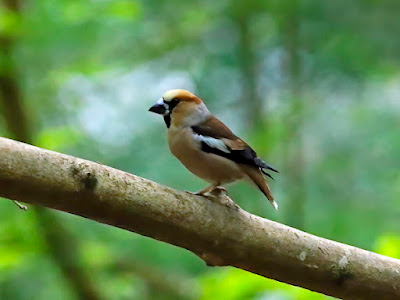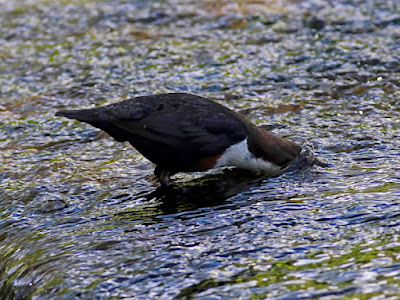The Hawfinch is a bird that's escaped me over the years, so when fellow photographer and Gwent Birder Mike Gough told me about them being at a place called Rhiwbina Hill near Caerphilly, I just had to get over there and take a look.
It's on a country lane where there's a pull in and right next to the pull in there's a small open area where someone puts food and water out for the woodland birds. It didn't take long for the birds to start coming in.

the feeding area
I sat in my car for about five minutes and then there it was my first Hawfinch a handsome male.

my first hawfinch 
hawfinch
The Hawfinch is supposed to be a very shy bird but this individual was coming in to feed on a regular basis. It usually feeds on things like nuts and cherry stones which it cracks open with that huge bill.
Here's a selection of the other species of birds that were coming in.

great spotted woodpecker 
chaffinch 
jay 
woodpigeon
I was only there for about half an hour but I'd bagged myself loads of pictures and was very happy that I'd finally seen a Hawfinch and in Gwent as well.

handsome male hawfinch
Big thank you to Mike Gough for putting me on the right track and for finally letting me put the Hawfinch on my British list. Cheers!!









.jpg)
































